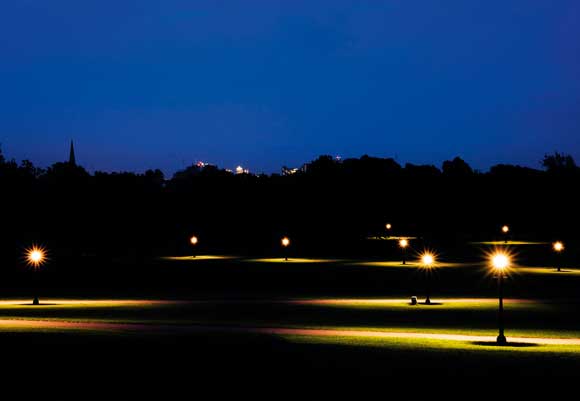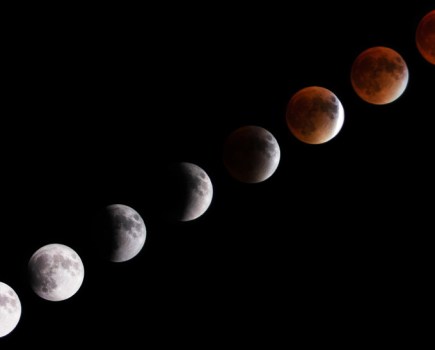Composition is as complex a subject, however, one rule that permeates different fields of photography, and one that has roots in classical art, is the rule of thirds. Read on to discover how you can utilise the rule of thirds to improve your shots.

Taking better photographs is the number one goal of any budding snapper and one the rule of thirds can help. To this end, the art of improving your photography has had countless books, magazine features and website articles devoted to it, and as such it’s difficult to decipher which technique is best and, more importantly, would be best suited to improving your own photographs.
Altering an image after the shot, in what’s labelled ‘post processing’, is seen as a good option because it gives you more control over the final look of the image, and can serve to correct any errors at the moment of capture. However, there is no substitute for getting the shot right in camera, and one way to do this is to focus on composition and, more specifically, the rule of thirds.
Composition is as complex a subject as any photo processing technique, with various different interpretations on what makes strong composition. However, one rule that permeates different fields of photography, and one that has roots in classical art, is the rule of thirds.
Understanding the Rule of Thirds – Explanation
The rule of thirds concerns the placement of objects within the frame, and involves dividing the frame into nine separate, equally sized sections through the intersections of lines placed a third of the way through the images both horizontally and vertically. The grid created by the intersecting rule of thirds lines is then used as a guide for placing the key elements in the shot to have the most impact.
While many photographic techniques and rules can be accused of being short-lived and fashionable, the rule of thirds is definitely not one of them. The idea of segregating the frame into rule of thirds styled separate thirds was first observed by landscape photographers in the early 19th century as a means of imparting order on their work and creating a pleasing dynamic within the frame.
While the horizontal rule of thirds lines serve as a good guide to the placing of a horizon, the vertical lines, and their interaction with the horizontal lines at the points of intercept, are also key to the rule. Arranging an image with a key component aligned to the intersecting points can create artistic tension and dynamism in the frame. The focus with the rule of thirds isn’t entirely to do with what you put on these lines and in the different sections, however, as there is also a large emphasis on negative space.
Rule of Thirds – Why it Works
Not only does the rule of thirds provide guidelines as to where to place the strongest elements in each composition (the horizon or the body of a model, for example) but also the impact point, or point of intersect, also helps with framing of images. Placing a subject on one of these gives it the maximum impact in the frame in relation to other elements.

For a new perspective on the rule of thirds, you can follow the more regular convention of placing the horizon on the bottom third. This gives much more sky in your image and creates a more spacious composition.

As you can see here, placing the horizon rule of thirds section squarely in line with the bottom horizontal intersecting line, and the point of interest on the intersect, the composition has maximum impact.

Understanding the Rule of Thirds – Using It
The rule of thirds, as previously mentioned, has its roots in the study of landscapes in classical art. As such, the best place to begin to think about implementing the rule is in conventional landscape photography. One of the initial observations as to why the study of a landscape would be best suited to some kind of rule was that it would avoid the frame being dissected straight through the middle by the horizon. With this in mind, why not visit your favourite landscape location and experiment with placing the horizon roughly in the top third or the bottom third of the frame? You’ll find that this simple shift can transform the look of the image and even bestow upon it a completely different character that you’d previously failed to capture.
Though the rule of thirds is traditionally viewed as a compositional tool best suited to landscape photography, that’s not to say that it doesn’t suit other subjects. When shooting portraits, for example, it’s always a good idea to avoid placing the subject in the dead centre of the frame. Aligning the subject’s eyes with the line dissecting the top third of the image is a technique often used, and when shooting in portrait format in general the main focal point of the subject is well served when placed at either top-left or top-right point of intersect. Architectural photography can also benefit from the rough implementation of the rule of thirds. The arrangement of converging verticals and leading lines through the image has maximum impact if directed to an impact point.

A good rule of thumb when attempting to observe the rule of thirds is to try to leave the centre of the image free of any subject matter. This creates negative space, which draws the eye to other elements within the frame, such as the boathouse and drain in this shot, and the horizon in the distance.






